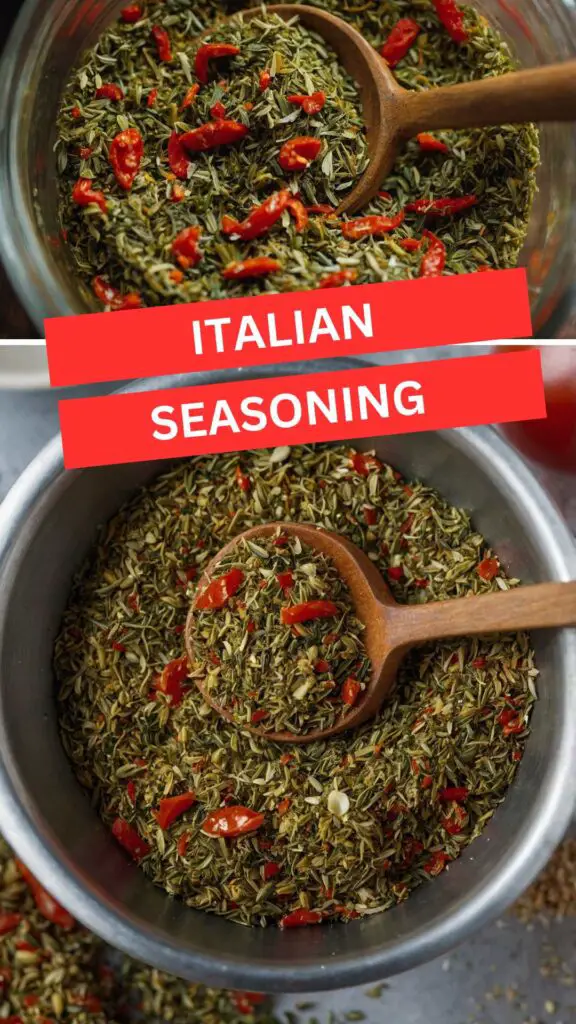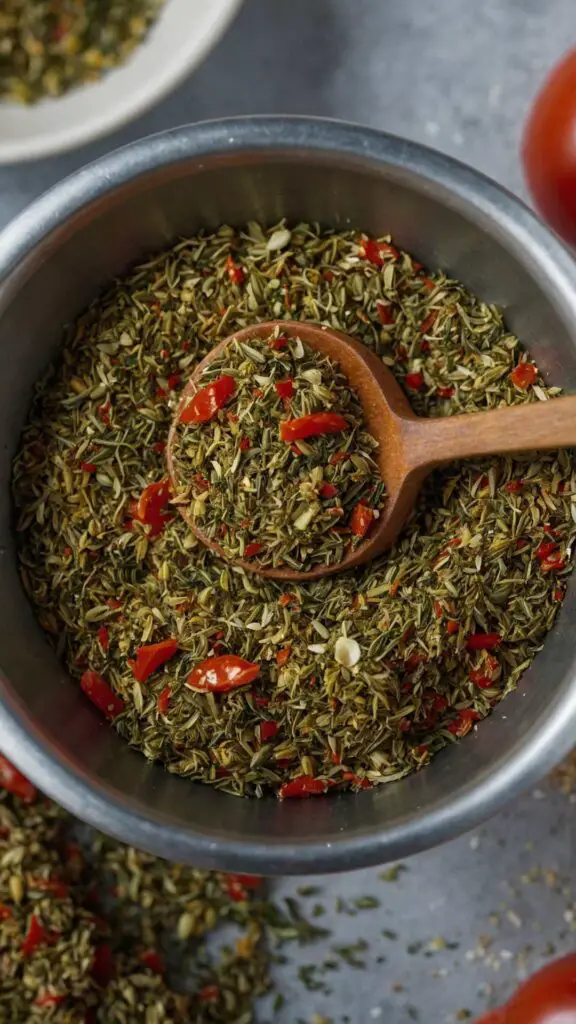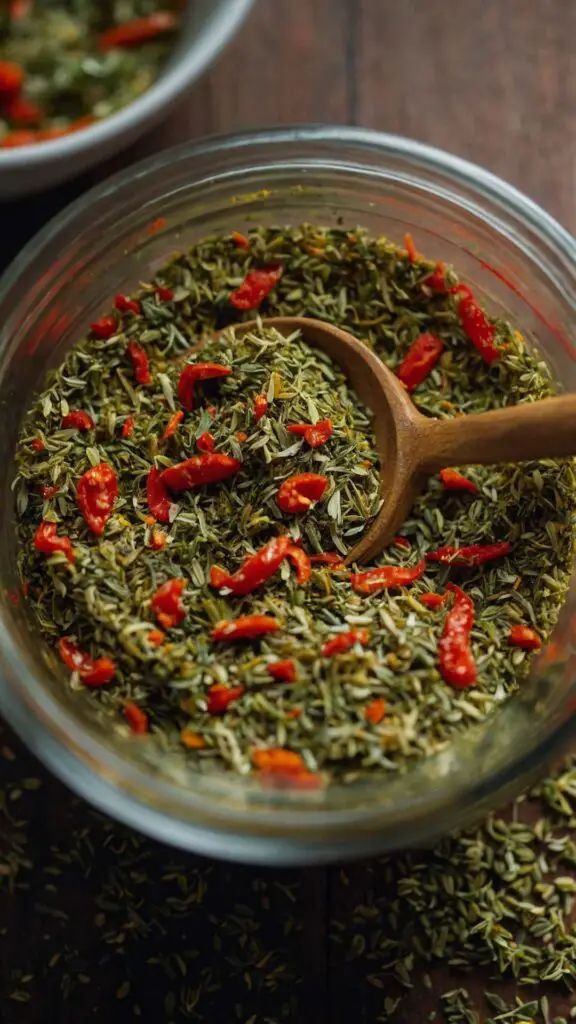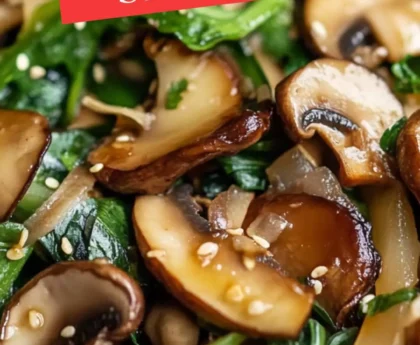Have you ever savored a dish that left you reminiscing about sun-soaked piazzas and vibrant markets in Italy? Italian seasoning can help recreate that enchanting experience right in your own kitchen. Imagine vibrant salads, hearty pastas, and fragrant roasted vegetables, all bursting with flavor.
Pair this seasoning with grilled chicken, fish, or even stir it into a comforting soup. The possibilities are endless! Let’s dive deeper into this delightful herb blend that brings a taste of Italy to your table.

You’ll Also Like These Recipes
What is Italian Seasoning?
Italian seasoning is a blend of traditional herbs commonly used in Italian cuisine. This harmony of flavors typically includes dried oregano, basil, thyme, rosemary, marjoram, and parsley. Some variations might toss in red pepper flakes, garlic powder, or smoked paprika to add depth or a little kick.
But what sets this seasoning apart from simple dried herbs? It’s the vibrant combination that hints at tradition while making everything it touches taste better. As a busy food blogger and dietitian, I rely on this blend to make my meals quick, healthy, and bursting with zest.
What Makes This Recipe Different?
You might wonder how my take on Italian seasoning stands out. Instead of purchasing pre-packaged blends, I recommend crafting your own mix. Making your own allows for control over the flavors, ensuring an optimal taste experience.
Moreover, combining fresh herbs whenever possible offers a brightness that dried herbs can sometimes lack. A homemade blend can match your unique palate. Plus, it’ll save you a couple of bucks!
How Does It Taste?
Imagine mixing earthy notes from the thyme and rosemary with the sweet undertones of basil. The oregano adds a punchy flavor that wakes up your taste buds, while parsley brings a refreshing tone to the blend. When seasoned right, it’s as if each ingredient dances on your palate, creating a warm embrace of Mediterranean goodness.
Ingredients You’ll Need to Make This Italian Seasoning
To whip up a perfect Italian seasoning blend, gather the following ingredients:
- 2 tablespoons dried oregano
- 1 tablespoon dried sweet basil
- 1 tablespoon dried thyme leaves
- 1 tablespoon dried rosemary, crushed
- 1 tablespoon dried marjoram
- 1 tablespoon dried flat-leaf parsley
- 1 teaspoon crushed red pepper flakes
- 1 teaspoon garlic powder
- 1 teaspoon smoked paprika (optional)
With these simple components, let’s embark on creating our seasoning blend!
Step-by-Step Instructions
Step 1: Gather Your Ingredients
Start by assembling all your ingredients. Measurement is key here, so having everything ready ensures a smooth process.
Step 2: Measure Each Spice
Carefully measure each ingredient according to the list provided earlier. Pay close attention, especially with the dried herbs as their flavors can vary.
Step 3: Combine Ingredients
In a medium bowl, mix all the measured ingredients. Use a whisk or fork to thoroughly combine them. This step is crucial to achieving a uniform flavor throughout your blend.
Step 4: Adjust to Taste
Take a small taste of your blend. This is where you can adjust things. If you like more heat, consider adding an extra pinch of crushed red pepper flakes or if you’re a garlic lover, toss in a bit more garlic powder.
Step 5: Store Your Blend
Find an airtight container or a small jar. Pour your mixture in and store it in a cool, dark pantry. Proper storage maintains freshness and intensity of flavors.

Tips & Tricks for Making Italian Seasoning
- Fresh vs. Dried: Whenever possible, use fresh herbs. Dried herbs are great, but fresh adds a more vibrant flavor!
- Blend it Fresh: Make small batches and use them fresh. Over time, herbs lose their potency.
- Taste Test: Always taste before you finalize your seasoning blend. Everyone’s palate is unique!
- Labeling: If you’re making several spice blends, label each container. This keeps your kitchen organized.
- Experiment: Don’t be afraid to tweak the recipe. Love sage? Add it in! Don’t enjoy marjoram? Leave it out! It’s your kitchen, run it your way.
Nutrition Information

How Do I Store This Dish?
Store your Italian seasoning in a cool, dark place to maintain its flavor. In a properly sealed container, it can last for up to six months. If you notice a faded smell or less potency, it might be time to refresh your batch.

What Other Substitutes Can You Use in Italian Seasoning?
Maybe you’re missing some ingredients or want to try something new. Here are some alternatives:
- Herbes de Provence: This French herb blend mimics Italian seasoning but incorporates lavender and thyme—perfect for meats and roasts.
- Pesto: A rich substitute that’s fantastic on pasta or grilled veggies, giving you an added kick with its nutty taste.
- Thai Basil: It has a sweet flavor that brings a twist to Italian dishes, especially if you love that licorice note.
- Fennel Seeds: These provide a sweet, anise-like flavor. Use them sparingly in dishes where you want to hint at a deeper herbal note.
- Dried Dill: If you enjoy the tangy taste, dill can add an unexpected yet nice twist to salads.
Italian Seasoning
Equipment
- Airtight Container
Ingredients
- 2 tablespoons dried oregano
- 1 tablespoon dried sweet basil
- 1 tablespoon dried thyme leaves
- 1 tablespoon dried rosemary crushed
- 1 tablespoon dried marjoram
- 1 tablespoon dried flat-leaf parsley
- 1 teaspoon crushed red pepper flakes
- 1 teaspoon garlic powder
- 1 teaspoon smoked paprika optional
Instructions
Step 1: Gather Your Ingredients
- Start by assembling all your ingredients. Measurement is key here, so having everything ready ensures a smooth process.
Step 2: Measure Each Spice
- Carefully measure each ingredient according to the list provided earlier. Pay close attention, especially with the dried herbs as their flavors can vary.
Step 3: Combine Ingredients
- In a medium bowl, mix all the measured ingredients. Use a whisk or fork to thoroughly combine them. This step is crucial to achieving a uniform flavor throughout your blend.
Step 4: Adjust to Taste
- Take a small taste of your blend. This is where you can adjust things. If you like more heat, consider adding an extra pinch of crushed red pepper flakes or if you’re a garlic lover, toss in a bit more garlic powder.
Step 5: Store Your Blend
- Find an airtight container or a small jar. Pour your mixture in and store it in a cool, dark pantry. Proper storage maintains freshness and intensity of flavors.
Notes
- Fresh vs. Dried: Whenever possible, use fresh herbs. Dried herbs are great, but fresh adds a more vibrant flavor!
- Blend it Fresh: Make small batches and use them fresh. Over time, herbs lose their potency.
- Taste Test: Always taste before you finalize your seasoning blend. Everyone’s palate is unique!
- Labeling: If you’re making several spice blends, label each container. This keeps your kitchen organized.
- Experiment: Don’t be afraid to tweak the recipe. Love sage? Add it in! Don’t enjoy marjoram? Leave it out! It’s your kitchen, run it your way.
Nutrition
Frequently Asked Questions
What is the shelf life of homemade Italian seasoning?
Homemade Italian seasoning can last up to six months, if stored properly in an airtight container. Over time, the flavor may diminish.
Can I use fresh herbs in place of dried?
Yes! However, remember that fresh herbs have a higher moisture content. Generally, use three times the amount of fresh herbs compared to dried ones.
What’s a simple recipe to use Italian seasoning?
Try mixing it into olive oil and lemon juice for a flavorful dressing for salads or vegetables. It’s quick, easy, and delicious!
How can I make my own garlic powder?
Dehydrate garlic cloves in a warm oven or food dehydrator until they’re crispy. Then grind them into a powder using a blender or spice grinder.
Can I use Italian seasoning in baking?
Yes! While it might seem an odd pairing, certain breads and savory pastries can benefit from a hint of this flavorful blend. Just use it sparingly.
Conclusion
Italian seasoning is more than just herbs; it’s a gateway to bringing vibrant flavors to your meals. This blend transforms basic ingredients into delightful dishes that resonate with the essence of Italian cuisine.
By preparing your own mix, not only do you control the flavor profile, but also infuse your meals with love and creativity. So, fire up those grills, gather your friends, and don’t forget to include this game-changing seasoning in your summer pasta salad. Your taste buds will thank you!





